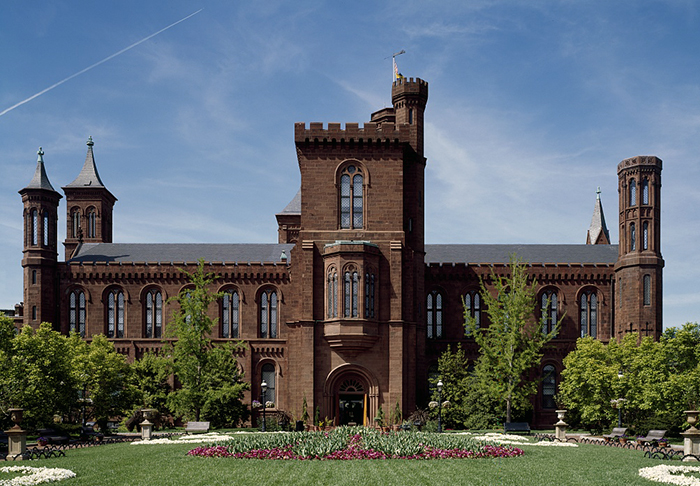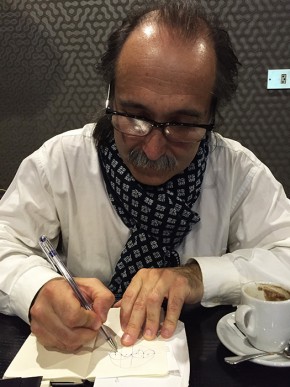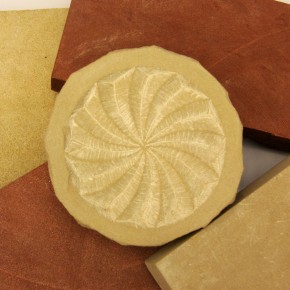Stone Carving from Basque Country to the Smithsonian Castle

“What a beautiful building! As I told you, the world is a curious place.”
Bernat Vidal sent me this response after I emailed him a photograph of the Smithsonian Castle, the institution’s iconic red brick building on the National Mall. A well-known stone carver from Durango in the Bizkaia province of Basque Country, Bernat carves works ranging from decorative pieces inspired by his surroundings to funeral tombstones in ancestral Basque styles. This summer, he will be sharing his skills and stories in the Basque: Innovation by Culture program at the Folklife Festival.
While we were conducting field research, Bernat lent us two pieces of the pale beige stone he carves back home. Our mission was to find a similar rock in the United States that he can use during the Festival. We accepted the challenge. How hard could it be to identify a stone?

Not as easy as I thought. First there were language barriers. Although I am a fluent Spanish speaker, I am by no means an expert on stones—in any language. Bernat told us he used limestone, so I started there.
Among 51 million Google search results, I found that one of the biggest limestone quarries in the Unites States is in Indiana. Its stones have been used for famous structures such as the Empire State Building and the Pentagon.
I told Bernat we could definitely find some limestone for him. But no! He said it is too soft for him to carve. Instead he suggested arenisca, or sandstone, which he uses in Durango. He sent a catalog of natural stones with technical characteristics and wished me luck. Boy, did I need it!
Who knew stones have “physicomechanical” properties? I read about volumetric weight, porosity, compression strength, friction wear resistance, and understood nothing. I needed an expert. Fortunately we have an extensive team of stone experts at the Smithsonian’s National Museum of Natural History.
So I met Leslie Hale, the rock and ore collections manager and a self-described hippie who said she has been going to the Folklife Festival ever since she was in her mother’s belly. After examining Bernat’s samples, she determined that the sandstone we need is very similar to the stones used to build the Smithsonian Castle. What a wonderful coincidence! And what’s more, there is a stash of extra stones in case the Castle needs repairs that we may be able to use for the Festival.

I rushed back to my office to email Bernat. As it turns out, the red sandstone from the Seneca Quarry in Maryland reminded him of stones from the Navarran Pyrenees in eastern Basque Country.
“There is a very similar stone in Navarra,” he continued in his email. “And I have no issues with a little color!”
The discovery was a reminder how such different parts of the world can really be quite similar. On top of that, Bernat’s enthusiasm to work with the Castle’s stones builds on the decades of connections the Smithsonian has established and continues to develop through its wide variety of programs.
Valentina Pilonieta-Vera is the program coordinator for Basque: Innovation by Culture at the 2016 Folklife Festival.

